Kanchenjunga Base Camp Trek is a long journey through a remote and beautiful part of eastern Nepal near Tibet and India. The trek takes you to the base of Kanchenjunga, which at 8,586 meters is the third-highest mountain in the world (28,169 feet). Before the measurement of Everest, Kanchenjunga was considered the tallest mountain in the world. The trek begins in the town of Taplejung and takes about 20 days to complete. You will explore the amazing Kanchenjunga Conservation Area and the beautiful Arun Valley on the trek.
The hike takes you through a variety of landscapes, such as dense forests, alpine meadows, and glacial valleys. Along the way, you’ll pass through a number of small villages and have the chance to talk to the people who live there. Most of them are of Tibetan or Nepali ancestry. The region’s culture is a very unique mix of many different ethnic groups. You will also visit numerous monasteries in Ramtang and Oktang to learn about Tibetan Buddhism.
You will go to the South base camp of Mount Kanchenjunga on this trek. As you walk to the base camps, you will be able to see some beautiful derivative peaks like Kanchenjunga South, and Central. We also get views of massive peaks like Makalu (8,481m), Lhotse (8,516m), and Cho Oyu (8,188m), which can be seen from the trek, and the views are stunning. More than 20 peaks exceeding 7,000m lie in the region along with numerous Himalayan glaciers including Yalung Kang (8,505m), Kambachen (7,903m), Jongsong (7,483), Jannu Peak (7,710) and others.
The chance to see rare animals like the snow leopard, red panda, and musk deer is one of the best parts of the Kanchenjunga Base Camp Trek. Many rare and endangered plant species can also be seen during the trek. You will walk through many different climates and environments, from thick forests to rock and snow.
Overall, the Kanchenjunga Base Camp Trek is a difficult but rewarding hike that combines natural beauty, cultural immersion, and adventure uniquely. It’s a great choice for people who want to trek in Nepal for a longer time and want to get off the beaten path.




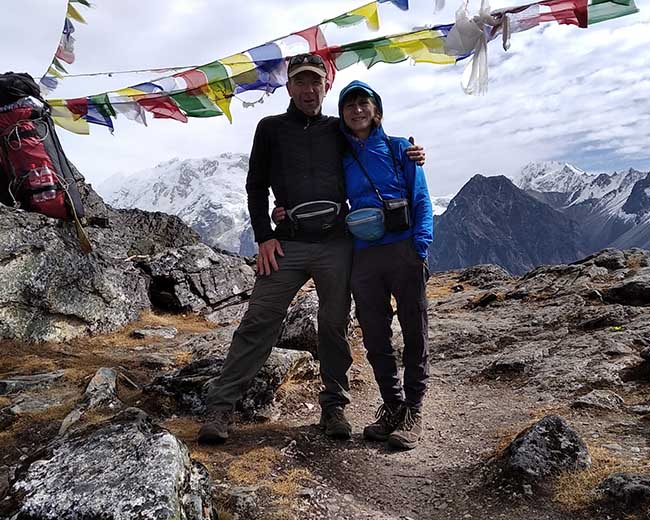
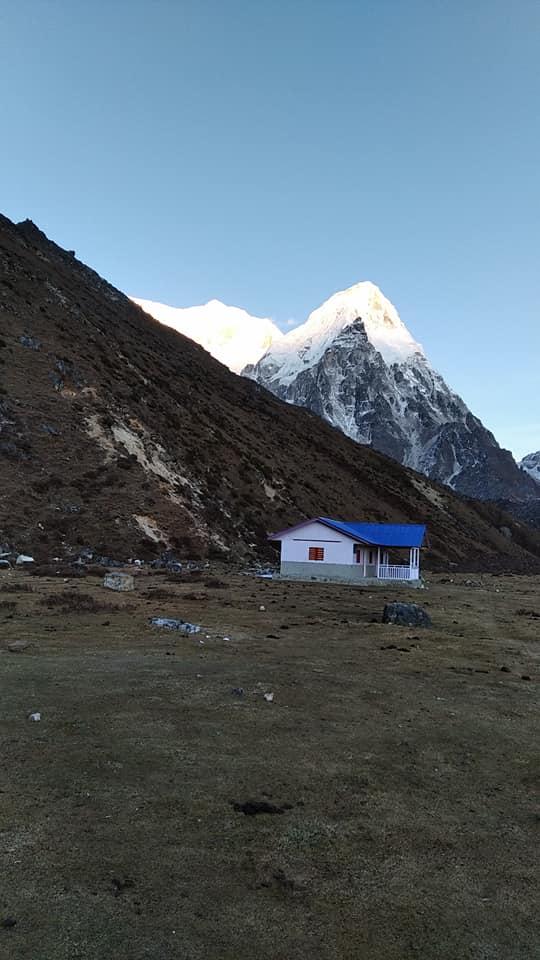

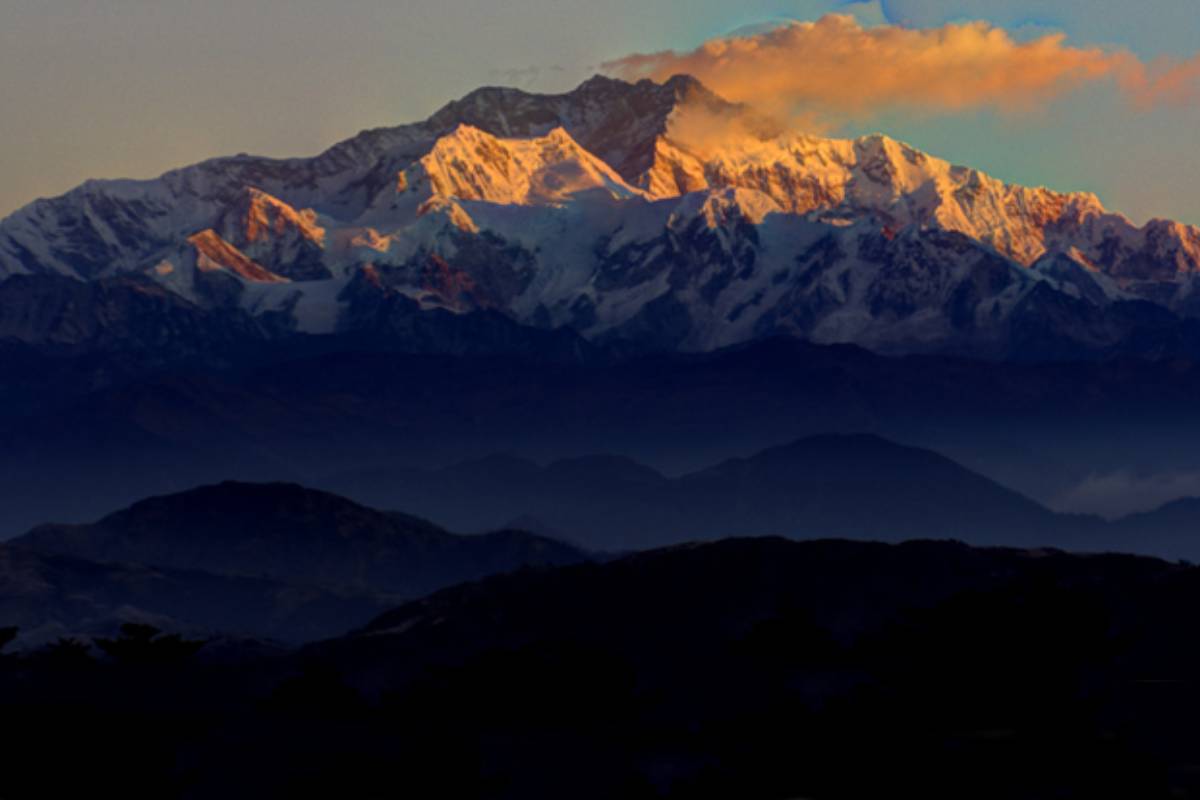

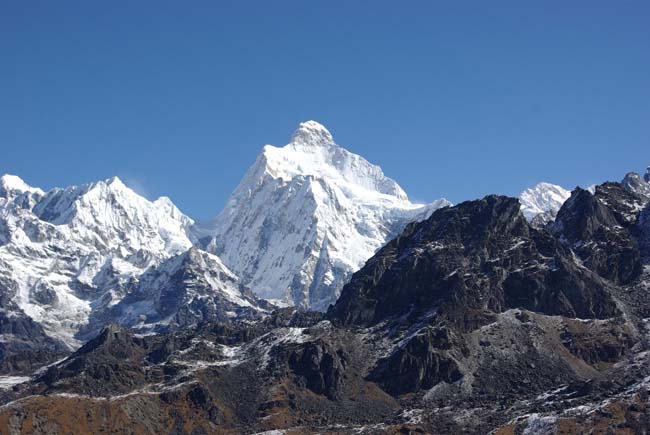

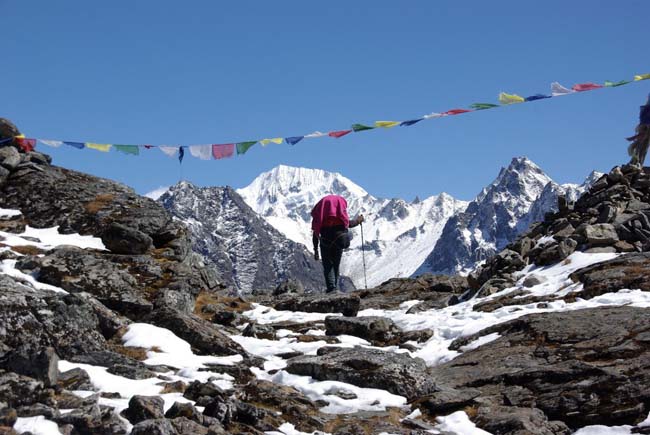





Thanks to all the members of Glorious Himalaya for your great service and hospitality during our Nepal stay.
We (an adult couple) booked the Kanchejungha circuit with base camp trek through Glorious Himalaya and they did their best to make our trip successful. We started our trek from Kathmandu to Bhairawa flight and then took a drive to Suketar which was an interesting part of this journey. Our guide Nima was an experienced and knowledgeable guide, as well as our porter Shiva, was very honest and strong enough to carry our belongings throughout the trek.
We visited both the north and south base camps of Kanchenjungha. Accommodations on this route were very common but well enough to spend the cold nights.
During our 1 month Nepal trip, we enjoyed lots and created some unforgettable moments in the Himalayas.
Thank you for your great effort. We will visit Nepal again with Glorious Himalaya company and recommend this agency for your great adventure in Nepal Himalayas with their professional services.
Dominic & Eva
Russia